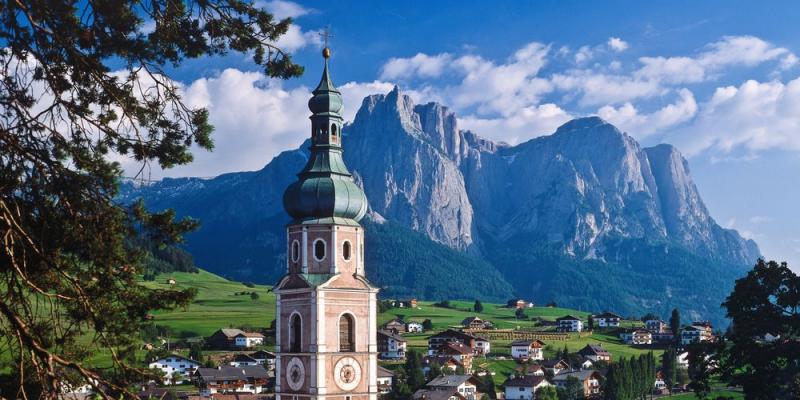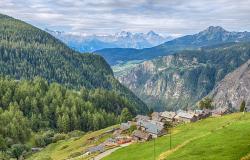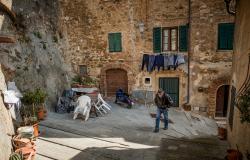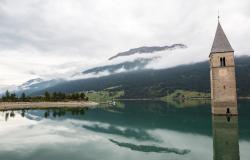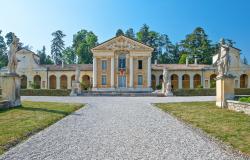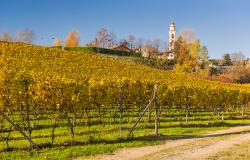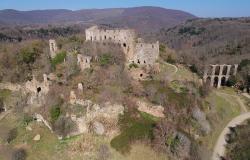South Tyrol, Italy’s ‘less-Italian’ region, is a fine blend of natural wonders (hello, Dolomites) and historic charm, with its well-groomed mountain villages, to be savored slowly, just as slow is the pace of life here, where tradition and modern coexist rather than clash.
Here are three villages in South Tyrol to include in your Italian travel wish list.
Caldaro, All About Wine
Caldaro, the ‘wine village’, is located 15 km south of South Tyrol’s capital of Bolzano. Surrounded by vineyards as far as the eye can see, Caldaro is the gem of the region’s wine production, thanks to the quality of the soil, the Mendola mountains which shield from Alpine winds and the nearby lake of the same name that mitigates the climate. This is the ideal habitat for the autochthonous vine that is the symbol of this beautiful borgo, the Schiava, or Vernatsch in German, a fruity red that pairs well with the typical local cured meat delicacy, speck. The first document referring to ‘Caldaro’s wine’ dates back to 1220, but the tradition goes back even further.

You may start your visit at the Museo Provinciale del Vino, in the heart of Caldaro, to learn about the history of wine production in the area and to observe all kinds of winemaking tools. A winery not to miss is Cantina Kaltern, the largest wine cooperative in South Tyrol; other cool ones are housed in historic castles, such as Manincor, in front of the lake, Castel Ringberg, helmed by a woman, and Castel Sallegg, where wines are finished 11 meters underground.
The main square is the social heart of the village, dominated by the 73-meter-high bell tower of the Church of Santa Maria Assunta. All around are shops, cafés, and an open-air market.
Glorenza, the Smallest ‘City’
Located about 80 kilometres northwest of Bolzano, in the Venosta Valley, Glorenza is the smallest village in South Tyrol to boast the title of ‘city’, a title it has had since 1309, when it was a strategic center for trade. Today, Glorenza has 900 inhabitants, most of whom speak German.
The center, inside the walls built by Emperor Maximilian for defense against Swiss incursions, has maintained its medieval aspect, its houses and palaces strictly cared for and protected. The tower of Porta Sluderno, one the village’s three access gates, houses an exhibition that recounts the history of Glorenza. It is possible to reach the walkways of the walls for a view of the village and the countryside that surrounds it.

A few minutes away is the mill, which, for centuries and until recently, was at the center of Glorenza’s daily life. Recently restored, it still has the original mechanism and conveyor belts where cereals were placed. In front of the mill is a 200-year-old pear tree of the Pala variety, for which Glorenza is renowned. The local pear is often used in the preparation of sweets and panforte.
Recommended is also a walk under the porticoes, where the medieval market used to take place, as the shelves carved into the walls suggest; they were for display of the goods.
Castelrotto, the Knights Village
It is said that the nine bells of the 82-meter bell tower in Castelrotto, one of the highest in South Tyrol, produce the most beautiful sound of South Tyrol. The unmistakable onion-shaped campanile is a landmark monument of this village at the foot of the Alpe di Siusi, the largest high-altitude Alpine meadow in Europe, part of the marvelous Sciliar-Catinaccio Natural Park.

Traditions are highly cherished in this borgo; several events are held throughout the year, such as the re-enactment of the traditional ‘farmer’s wedding’ in January, the Ride of Oswald von Wolkenstein in May, the Corpus Domini procession, the August sagra, and a folk music fest in October. The Ride however is the most famous and awaited event, a knight tournament dedicated to the poet Oswald von Wolkenstein, a much celebrated and beloved figure in this area. There are as many as 36 teams from four villages including Castelrotto to challenge one another. Each team is composed of four knights (cavalieri) dressed in traditional costumes, riding horses harnessed like in the past.
The monument that gave the name to the village, Castel Rotto, was destroyed as early as the 13th century. But the village has preserved its late medieval and Tyrolean charm, as can be seen in the central Piazza Kraus. The historic houses have been painted at the end of the 19th century by a local artist, and modern Alpine architecture blends well with the historic buildings.
